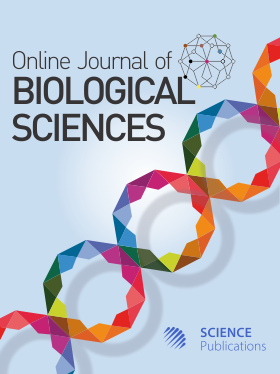Effect of Seaweed Extracts on Rice Growth and Tolerance to Salinity, Drought and Blast (Magnaporthe oryzae)
- 1 Department of Plant Pathology, Bangabandhu Sheikh Mujibur Rahman Agricultural University, Gazipur, Bangladesh
- 2 Department of Fisheries Biology and Aquatic Environment, Bangabandhu Sheikh Mujibur Rahman Agricultural University, Gazipur-1706, Bangladesh
Abstract
Rice, a primary staple, confronts a multitude of biotic and abiotic stresses. Drought and salinity, exacerbated by climate change and blast disease caused by Magnaporthe oryzae, significantly contribute to yield losses. To tackle the problems, two types of seaweeds-one known as Hypnea musciformis and another unknown-were collected from Saint Martin, Cox's Bazar, Bangladesh and then examined for the potential of their extracts to stimulate growth and improve resistance to drought, salinity and blast disease in rice. Molecular identification based on cytochrome C Oxidase subunit I (COI) gene sequence, the unknown seaweed was identified as Gracilaria tenuistipitata. Seaweed extracts were prepared from seaweed at different pH (8, 9, 10) and temperature (40, 50, 60, 70, 80°C) regimes. The laboratory and pot experiments were set up using a Completely Randomized Design (CRD), with three replications for each treatment. All trials were conducted ethically and data were analyzed using ANOVA followed by Duncan's Multiple Range Test (DMRT) to determine the statistical significance (p = 0.05) of treatment means. Priming rice seeds with the extracts significantly increased germination rates and seedling vigor. Furthermore, seedlings grown in media amended with seaweed extracts exhibited enhanced growth and chlorophyll content compared to the control. Seaweed extracts also demonstrated the ability to ameliorate drought and salt stress while protecting rice plants from the blast pathogen M. oryzae. Among the two seaweeds tested, G. tenuistipitata was found to promote higher plant growth and biotic and abiotic stress tolerance in rice compared to Hypnea musciformis. Optimal extraction conditions, particularly low temperature (40°C) and pH 9, were identified as key factors in maximizing the bioactivity of the extracts. From these results, it can be concluded that seaweed extracts, particularly those from H. musciformis and G. tenuistipitata collected from Saint Martin, Cox's Bazar, Bangladesh, could be utilized as potential bio-stimulants and stress alleviators in rice cultivation, contributing to improved growth and resilience in the face of environmental changes
DOI: https://doi.org/10.3844/ojbsci.2024.535.549

- 4,475 Views
- 2,487 Downloads
- 0 Citations
Download
Keywords
- Hypnea
- Gracilaria
- Molecular Identification
- Growth Promotion
- Salinity
- Drought
